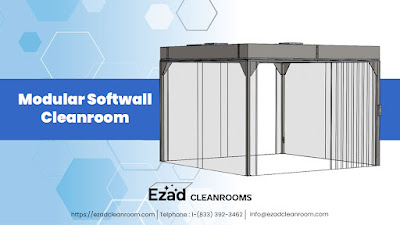What Kind of Modular Hardwall Cleanroom Can You Choose Now?
During World War II, clean room technology has advanced in tandem with advancements in astronautics and the dawning of the nuclear age, extending to a wide range of other fields of application due to these developments. Cleanroom technology has grown more critical due to the explosion in microelectronics that has occurred since the introduction of the personal computer. Production, assembly, and testing procedures are becoming more complicated, necessitating controlled environments that limit extraneous effects.
What Exactly is a "Cleanroom"?
The goal of clean room technology is to safeguard industrial processes and the goods that emerge from them from contaminants of all sorts (particles or germs), allowing them to be produced in line with requirements. In addition, the elimination of waste from the process and the product, the avoidance of product contamination between them (cross-contamination), and the protection of people and their environment have all become more critical for the welfare of society at large. Choosing the top advantage of Modular Hardwall Cleanrooms is essential, and here we are talking about that.
It is referred to as "clean rooms" when the particle concentration in the air is regulated. A defined level is not exceeded in a room or in a series of rooms where the particle concentration in the air is controlled. Similarly, the ambient temperature and relative humidity in the air may be directed to meet the needs of the process.
Smaller-scale mini-environments (such as laminar flow modules, isolators, and chapels) may serve as an alternative to conventional clean rooms by offering exceptional protection against the primary source of contamination, the user, or the user's procedure, depending on the situation. The concept of these clean zones is based on a continuous supply of filtered air at high pressure, which ensures that the work surface is constantly shielded from pollutants by a constant stream of air. The production of continuous suction will occur in a contaminating process to limit the source in a volume of negative pressure. a contaminating process
Areas of Application
The advantages of having environmental conditions that are regulated and consistent are becoming more appreciated. When this technology was first introduced into the Swiss market, it was primarily used in the mechanical and optical industries, particularly in the watchmaking sector. As a result, the quantity of scrap generated due to contamination in the manufacturing process may be significantly decreased, while a consistent quality of a high level can be achieved.
As a result of the stringent regulations required by legislation, such as those enforced by the American FDA (Federal Drug Administration), which provides production authorizations, clean room conditions are essential in the pharmaceutical sector. Manufacturing and assembly of medical devices must occur in an atmosphere that is free of germs and free of dust to be effective.
Clean room technology is used in hospitals in various settings, including operating rooms, labs, pharmacies, isolation wards, and organ transplantation for patients with severely weakened immune systems, among other things.
In addition to these conventional areas of use, new ones have opened up in printing, biology, genetic research, nanotechnology, and the food industry, among other things (prolonged storage).
Retention Procedures and Barriers To Entry
The Modular Cleanrooms design engineer must consider a vast number of variables for each project they work on. The first issue is determining the amount of airflow needed to achieve the specified cleaning class while also overcoming the internal heat loads resulting from the process. Potential sources of contamination should be identified and investigated in advance.
Physical Enclosure And Access Control Are Important Considerations.
Particles from the outside air are kept from entering the clean room via a sealed envelope and a constant internal overpressure of at least 10 Pascal compared to the outside air. Several rooms whose cleanliness class diminishes as one gets closer to the outdoors may be placed in succession, depending on the needs of the situation (pressure cascades).
When dealing with contaminated or hazardous chemicals, the idea is turned on its side. To guarantee the safety of people and the environment, the most sensitive chamber has been depressed about the outside environment.
Filtration and Air Movement Are Important
Clean room technology relies on the filtering of both air and fluids to function correctly. Consequently, ever more effective particle filters (such as the HEPA-Filter (High-Efficiency Particulate Air) and the ULPA (Ultra Low Penetration Air) have been created to achieve this goal.
EZAD Cleanrooms
Telephone: 1-(833) 392-3462
Email: info@ezadcleanroom.com
Office Address: 2130 N Glassell St, Orange, CA, 92865




Comments
Post a Comment